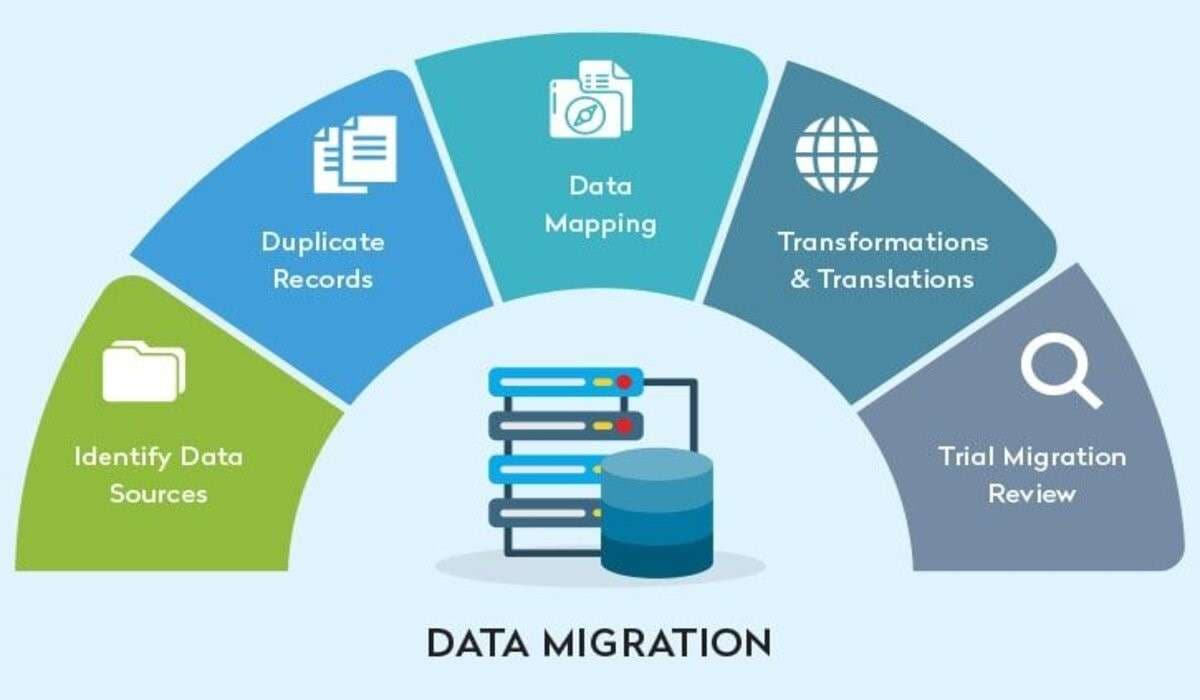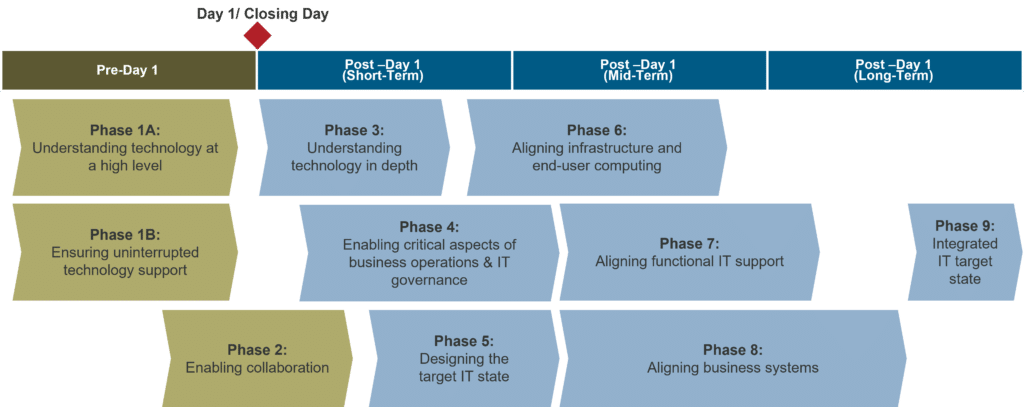Integrating artificial intelligence (AI) into legacy systems is a critical step for organizations seeking to enhance operational efficiency, improve service delivery, and maintain a competitive edge in their industries. Legacy systems, often built on outdated technologies and focused on specific tasks, can limit organizations' flexibility in innovating and adapting to changing market demands. Leveraging AI technologies, such as machine learning and natural language processing, can modernize these systems, improving data processing capabilities, streamlining operations, and enhancing customer experiences. However, this integration journey is fraught with challenges, necessitating a strategic approach to ensure success while preserving existing data value during the transition.
This guide offers IT professionals and system integrators practical strategies and best practices for effectively integrating AI with legacy systems. It addresses key considerations, provides insights into the benefits of AI, outlines methods for preserving data integrity, and details best practices for developing a phased roadmap for integration. Additionally, this guide discusses common obstacles organizations face during modernization efforts and emphasizes the importance of maintaining SEO value throughout the integration process.
By understanding both the technical aspects and the strategic imperatives of AI integration, organizations can build a robust foundation that enhances operational capacity while optimizing their data management and ensuring compliance with emerging regulations.
How to Bridge the Gap Between Legacy Systems and AI
The significance of legacy systems in contemporary IT environments cannot be overstated. While these systems often represent considerable investments, they also pose challenges for organizations seeking to adopt new technologies. Integrating AI capabilities into legacy systems begins with a thorough assessment of existing infrastructures to identify enhancement opportunities.
Integrating AI can yield substantial improvements in operational efficiency and data analysis capabilities. AI technologies can automate repetitive tasks, allowing human resources to focus on more complex functions. Research indicates that AI can enhance operational efficiency by up to 30% through targeted integration strategies that leverage existing data more effectively.
Moreover, predictive analytics and AI-driven insights provide notable advantages in decision-making processes, empowering organizations to respond rapidly to developments in dynamic business environments. The incorporation of machine learning and natural language processing into analysis workflows can reveal hidden patterns, improve customer interactions, and streamline internal processes.
This integration necessitates careful evaluation of the existing IT ecosystem and consideration of the tools and platforms available for AI implementation. It is critical to select solutions that can seamlessly interact with legacy systems while providing future scalability.
Diagram illustrating the integration of AI technologies with legacy banking systems in the finance sector, focusing on machine learning and natural language processing. (Source: Neil Sahota)
Unlocking Data Value During System Transitions
When transitioning from legacy to AI-enabled systems, preserving data integrity and value is paramount. Organizations must commence with a comprehensive data assessment and cleansing process that identifies relevant data sources within legacy systems to ensure quality during migration. According to a report by Gartner, poor data quality costs organizations approximately $12.9 million annually. Thus, maintaining robust data governance policies is vital for ensuring data quality and compliance during transitions.
Employing Extract, Transform, Load (ETL) processes is crucial for enabling seamless data migration. Data integration tools or middleware can connect various sources within legacy systems, creating a unified data environment that is agile to the needs of modern AI applications. This strategic approach allows organizations to convert unstructured data into structured formats, making it optimized for AI algorithms.
Continuous monitoring and validation also play a significant role during this phase. Implementing data validation processes ensures the accuracy and integrity of migrated data. Research indicates that organizations prioritizing governance are 2.5 times more likely to report significant impacts from their AI initiatives.
By effectively managing data throughout the critical transition from legacy to modern systems, organizations can safeguard the value derived from existing data while enhancing its usability for AI applications.

Diagram showing the data migration process, highlighting the steps and key actions involved in ensuring a smooth data transition. (Source: Wondershare EdrawMax)
Creating a Phased Roadmap for Integration Success
Developing a strategic roadmap for the phased integration of AI into legacy systems is essential for ensuring minimal disruption and maximizing efficiency. A well-defined phased integration approach allows organizations to manage the complexities of legacy systems while gradually introducing AI capabilities.
Creating this roadmap involves outlining the necessary steps for integration, beginning with pilot migrations. Pilot migrations using limited datasets help identify potential integration issues early on, allowing teams to address challenges before full-scale implementation. Research indicates that organizations executing a staged migration strategy are 30% more likely to report successful AI integration outcomes.
Stakeholder involvement is also critical throughout the integration process. Engaging both technical and non-technical stakeholders ensures comprehensive feedback and improves the likelihood of acceptance across the organization. Effective change management, including training and support for personnel affected by the changes, reduces resistance and fosters a supportive transition environment.
Establishing clear goals and metrics for success at each phase will additionally guide organizations in assessing the effectiveness of the integration. By demonstrating the added value AI brings, organizations can gain support for ongoing modernization initiatives.

Timeline visual illustrating the key phases for IT integration, which can guide the phased roadmap for AI integration with legacy systems. (Source: Burnie Group)
Maintaining SEO Value in System Transitions
Preserving SEO equity during transitions from legacy systems to modern solutions is vital for maintaining online visibility and traffic. Organizations need to understand the SEO implications of legacy systems and the potential risks posed during integration.
Best practices for maintaining SEO value include ensuring URL integrity and mapping existing content to new formats. Changes made during the transition must be carefully executed to avoid negatively impacting search engine rankings. Continuous monitoring of search performance metrics during and after the migration is essential for addressing any drops in organic traffic attributed to system changes promptly.
According to a study, 62% of organizations cite data security as a top concern during system integration, particularly when it affects website performance. By employing a robust SEO strategy, organizations can mitigate risks and ensure that their digital presence remains intact throughout the integration process.
Ongoing optimization efforts and regular audits will further support the maintenance of SEO value as organizations transition to modern AI capabilities. This dual focus on system integration and digital marketing promotes sustainable long-term growth.

Chart comparing the impact of AI tools on organic traffic in different industries, showcasing how website performance may change during transitions. (Source: Rock Content)
Navigating the Challenges of Modernizing Legacy Systems
Modernizing legacy systems through AI integration presents numerous challenges that organizations must address proactively. The complexity inherent in legacy systems often translates to technological debt, which can hinder the adoption of new technologies.
A leading challenge is cultural resistance to change. Many employees may feel accustomed to legacy systems, leading to apprehension towards new tools and processes. Robust training programs designed to equip staff with the skills necessary to utilize AI technologies effectively can mitigate this resistance. Furthermore, organizational leaders should communicate the benefits of modernization to foster buy-in from stakeholders.
Compatibility issues between new technologies and legacy systems may also arise during integration. Organizations may struggle to find suitable solutions compatible with legacy architectures, particularly in sectors such as healthcare and finance. Identifying and leveraging tools that bridge these compatibility gaps is essential.
Ongoing support from leadership, coupled with a culture of innovation and flexibility, further enhances an organization’s ability to navigate the pitfalls associated with legacy system modernization.

Photo depicting a team meeting with expressions of frustration, illustrating the common challenges faced during integration processes. (Source: Forbes)
Future Trends: Where AI and Legacy Integration are Headed
As organizations navigate the complexities of integrating AI with legacy systems, it is essential to consider the emerging trends shaping this landscape. Predictions suggest significant advancements in AI adoption and legacy system modernization across various industries, including banking, finance, manufacturing, and retail.
By 2028, it is projected that over 80% of manufacturing and retail organizations will implement AI technologies to enhance operational efficiency and customer engagement. A notable trend is the increased prevalence of low-code platforms that simplify AI integration, making it more accessible for organizations with limited technical expertise.
Moreover, generative AI is expected to profoundly impact product development and data management strategies. These innovations will enable businesses to effectively leverage new capabilities while maintaining competitiveness in an evolving corporate environment.
Industry responses to these trends indicate a shift toward more strategic applications of AI, emphasizing a long-term view that prioritizes sustainable integration practices over immediate returns.

Visual representation of future trends in AI technology and legacy system integration, emphasizing the evolving landscape. (Source: Algoxoc)
Conclusion
Integrating AI with legacy systems presents both challenges and opportunities for organizations. By strategically navigating this integration process, organizations can achieve enhanced operational efficiencies, improved customer experiences, and greater adaptability to market demands. Understanding the significance of legacy systems, preserving data integrity, and developing a structured phased roadmap are critical components for successful integration.
Organizations must also focus on maintaining SEO value and addressing cultural and technological hurdles that often accompany system modernization. Staying informed of emerging trends and leveraging appropriate tools will enable organizations to position themselves for future success. The creative fusion of AI and legacy capabilities not only enhances operational functionality but also ensures organizations remain competitive in a rapidly evolving digital landscape. Through diligent planning and execution, businesses can harness the potential of AI integration and pave the way for sustainable growth and innovation.

Kommentare (0)
Anmelden um an der Diskussion teilzunehmen oder .